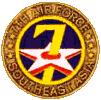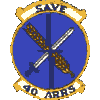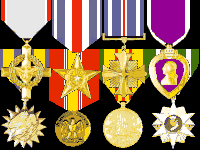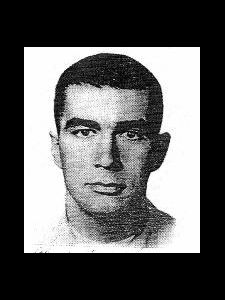Charles Douglas KingChief Master Sergeant40TH ARRS, 3RD AIR RESCUE GROUP, 7TH AF United States Air Force 29 March 1946 - 05 May 1978 Muscatine, Iowa Panel 36W Line 076 |



| |
 
|

|
The database page for Charles Douglas King
|
I never knew Charles King personally, He was with me every day.
He shares the same birthday,
Dan Breen |
|
I wear your bracelet and hope some day you'll come home. It's getting worn now but I will never take it off. You made the ultimate sacrifice and we owe you that much. My family knows its importance to me and will wear it long after I'm gone. Rest in peace.
Kay Kujawa |
A Note from The Virtual WallIn the late afternoon of 24 Dec 1968 then-Major Charles R. Brownlee, in F-105D 62-4234, was part of a flight which was attacking trucks on the Ho Chi Minh Trail near the Ban Karai Pass on the Lao/NVN border. Brownlee's aircraft was hit by enemy fire and he was forced to eject several miles to the west. Brownlee was able to contact his wingmen and advised that he was injured. Approaching darkness precluded a rescue attempt and Brownlee was told to remain under cover and expect a daybreak rescue attempt.On the morning of 25 Dec an HH-3E (tail number 64-14230) from the 40th Air Rescue Squadron's Det 1 arrived on the scene. Pararescueman A1C Charles D. King was lowered to the ground via hoist while the HH-3E remained in a hover. King found Major Brownlee's body still in his parachute harness hanging from a tree. As King was attaching Brownlee's harness to the hoist enemy troops appeared, firing at both King and the HH-3E. King was hit and advised his pilot to pull away from the site. As the HH-3 rose, the hoist cable snagged a tree and broke, dropping both King and Brownlee's body to the ground. Damage to the HH-3 and the presence of enemy troops prevented any further SAR attempts. Although a "Bright Light" ground team was inserted into and spent two days in the area, they found no trace of either man. Although A1C King had reported that Major Brownlee apparently was dead, both men were classed as "Missing in Action" and both were promoted while in that status. An Air Force board eventually concluded that Colonel Brownlee had died after ejecting and he was reclassified as "Died while Missing, Body not Recovered" with a date of death of 25 Dec 1968. On 05 May 1978 the Secretary of the Air Force approved a Presumptive Finding of Death for A1C King. In February 1986 a Lao refugee in the United States reported that he had witnessed King's capture and watched as he was taken away in a truck. The refugee's story matched most details the incident, but he had no knowlege of what subsequently happened to A1C King or to Brownlee's body. A1C King's identity papers were later seen on display in the Central Army Museum in Hanoi. The remains of the two men have not been repatriated.
"No greater love has a man than this, |
|
The point-of-contact for this memorial is one who wears his MIA bracelet, Dan Breen debreen@aol.com |
|
Top of Page
www.VirtualWall.org Back to |
With all respect
Jim Schueckler, former CW2, US Army
Ken Davis, Commander, United States Navy (Ret)
Memorial first published on 16 Sep 2000
Last updated 10/03/2006